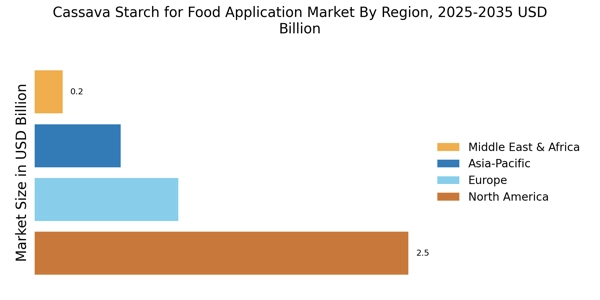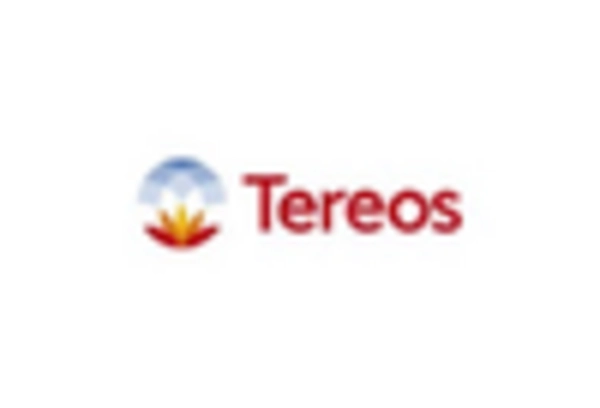Rising Health Consciousness
The increasing awareness of health and nutrition among consumers appears to drive the Cassava Starch for Food Application Market. As individuals seek healthier alternatives to traditional starches, cassava starch, known for its gluten-free properties, becomes a preferred choice. This trend is particularly evident in regions where gluten intolerance is prevalent. The market for gluten-free products is projected to grow significantly, with estimates suggesting a compound annual growth rate of over 10% in the coming years. Consequently, manufacturers are likely to expand their offerings of cassava starch-based products to cater to this health-conscious demographic, thereby enhancing the market's growth potential.
Versatility in Food Applications
Cassava starch exhibits remarkable versatility, making it suitable for a wide range of food applications. This adaptability is a crucial driver for the Cassava Starch for Food Application Market. It can be utilized in various products, including sauces, soups, and baked goods, serving as a thickening agent, stabilizer, or texturizer. The food industry increasingly seeks multifunctional ingredients that can enhance product quality while reducing costs. As a result, the demand for cassava starch is likely to rise, with market analysts projecting a steady increase in its usage across diverse food segments, further solidifying its position in the market.
Growing Vegan and Plant-Based Trends
The surge in veganism and plant-based diets is influencing the Cassava Starch for Food Application Market. As consumers gravitate towards plant-based alternatives, cassava starch serves as an ideal ingredient due to its plant origin and functional properties. This trend is particularly pronounced in regions where plant-based diets are gaining traction, with market data indicating a significant rise in the consumption of plant-based products. The versatility of cassava starch allows it to be incorporated into various vegan formulations, including dairy alternatives and meat substitutes. This alignment with consumer preferences for plant-based options is likely to bolster the market's growth in the foreseeable future.
Innovation in Food Processing Technologies
Advancements in food processing technologies are likely to enhance the utilization of cassava starch in the food industry. The Cassava Starch for Food Application Market benefits from innovations that improve the extraction and modification processes of cassava starch, resulting in higher quality and functionality. These technological improvements enable manufacturers to create specialized starches tailored for specific applications, such as low-fat or low-calorie products. As food manufacturers increasingly adopt these technologies, the demand for cassava starch is expected to rise, reflecting a broader trend towards enhanced food quality and consumer satisfaction.
Sustainability and Environmental Considerations
The growing emphasis on sustainability and environmental responsibility is influencing the Cassava Starch for Food Application Market. Consumers are increasingly concerned about the environmental impact of their food choices, leading to a preference for sustainably sourced ingredients. Cassava, being a drought-resistant crop, presents an attractive option for food manufacturers aiming to reduce their ecological footprint. Market data suggests that products featuring sustainably sourced cassava starch are likely to gain traction among environmentally conscious consumers. This shift towards sustainability may drive innovation in sourcing and production practices, further propelling the growth of the cassava starch market.


















Leave a Comment